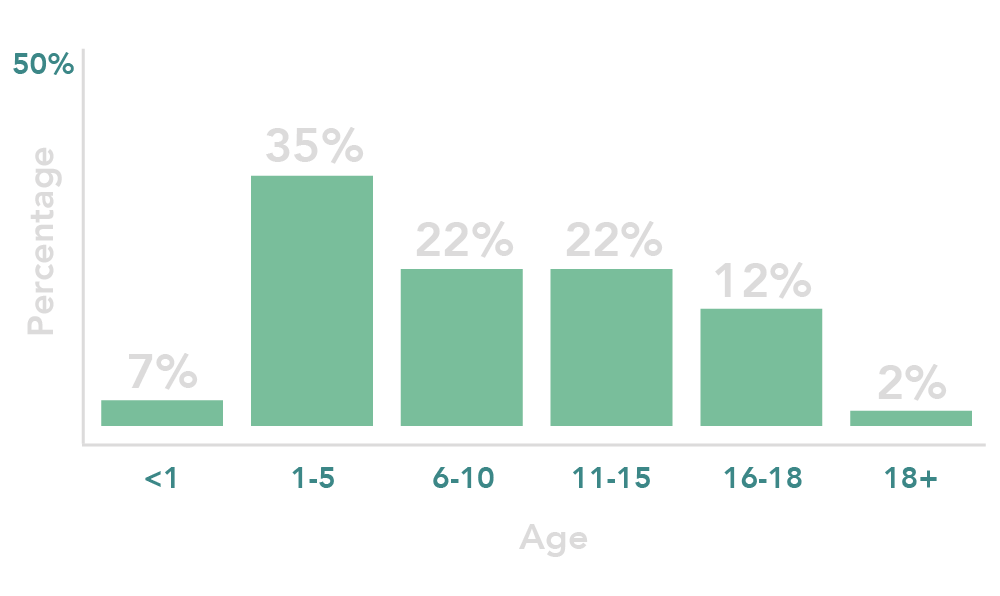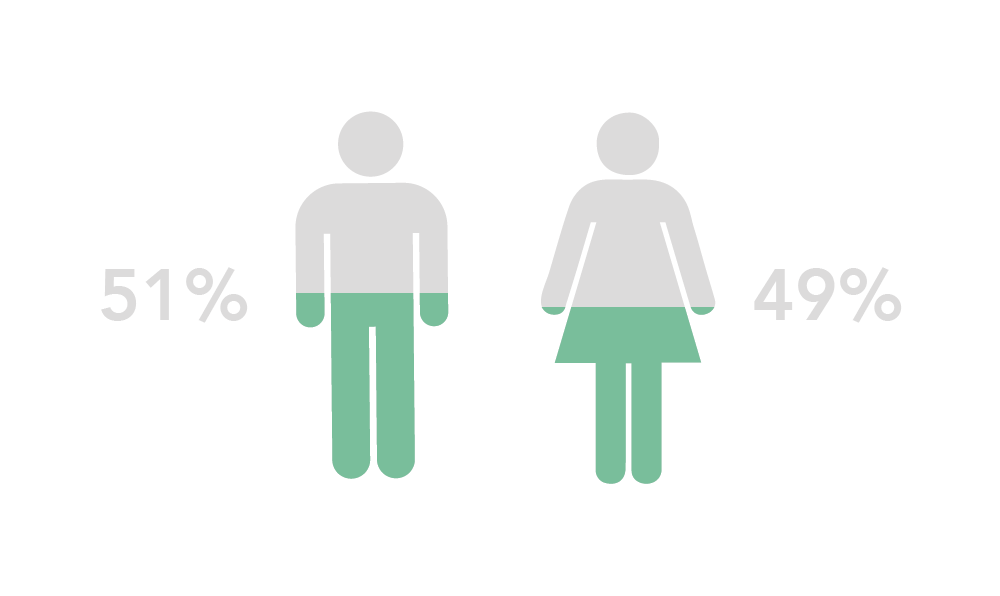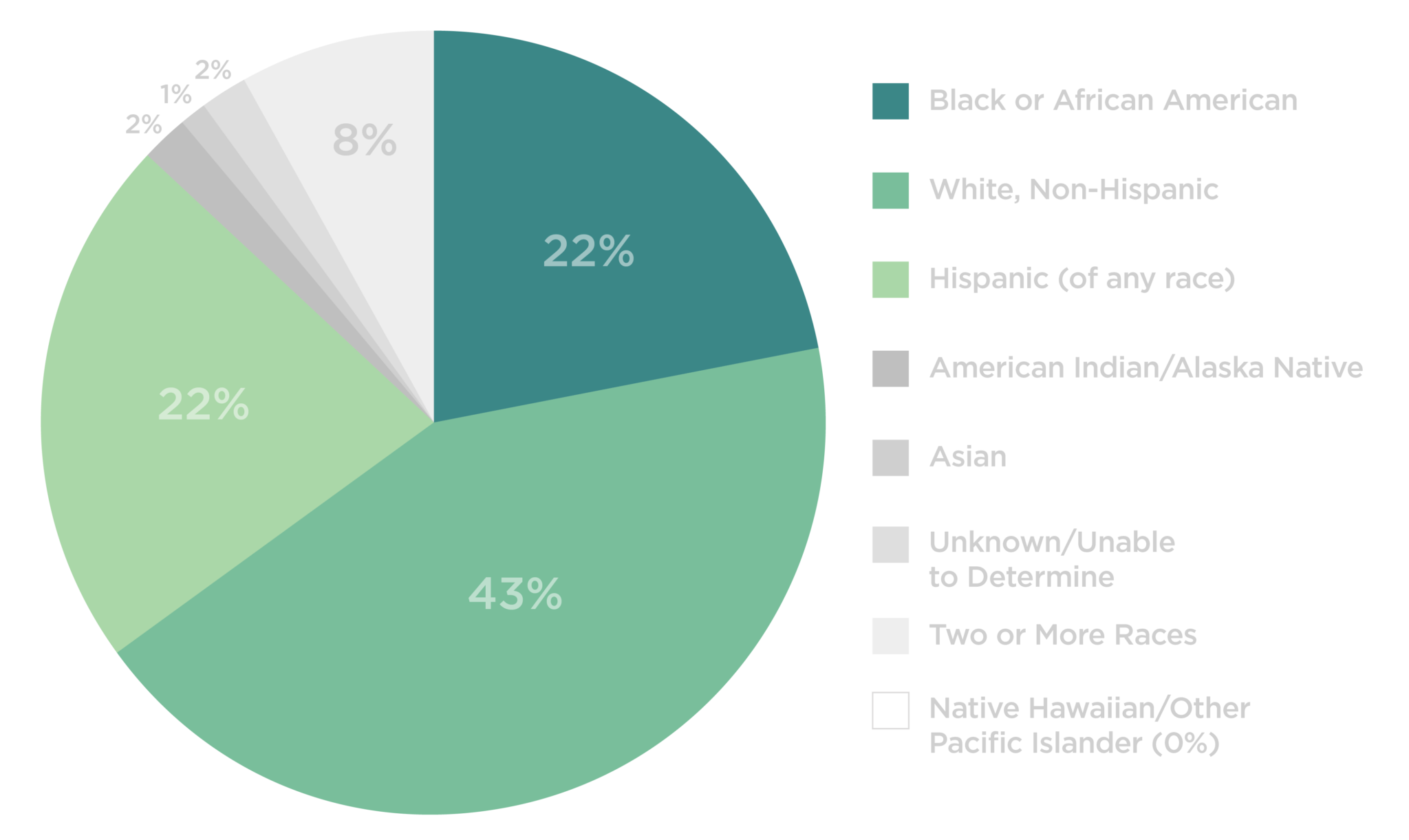What Is Foster Care?
Nationwide, nearly 400,000 youth live in foster care. Young people enter foster care when the courts determine they need to be temporarily or permanently removed from their current living situation because of challenges at home.
Despite the challenges of foster care these youth have dreams, ambitions and the potential to succeed. A recent study found that 70% of foster youth plan to go to college. However, like all children, they need guidance and support. Whether that comes from a family member, mentor, friend, teacher or other member of the community, that support can make all the difference.
Foster Care Facts




Length of Stay
For the youth in foster care on September 30, 2021, the average amount of time they had been in the system was 22 months. Sixty five percent of those leaving care that year had been away from home for a year or longer. Forty seven percent of the young people leaving the system were reunified with their birth parents or primary caregivers.
Youth in Transition
Each year, an estimated 20,000 young people “age out” of the U.S. foster care system. Many are only 18 years old and still need support and services. Several foster care alumni studies show that without a lifelong connection to a caring adult, these older youth are often left vulnerable to a host of adverse situations.
Placements
In 2021, 44% of youth in care were living in a foster family home.
In 2021, 35% of youth living in foster care were in kinship care. Kinship care refers to the care of children by relatives or, in some jurisdictions, close family friends. Relatives are the preferred resource for youth who must be removed from their birth parents because it maintains the youth’s connections with their families.
Adoptions
In 2021 53,546 youth in foster care were adopted. Of those youth, 55% were adopted by their foster parent(s). The “foster parent” category excludes anyone identified as a relative of the youth. Thirty four percent of youth adopted in FY 2021 were adopted by a relative. A “relative” includes a step-parent or other relative of the youth.
SOURCES:
Adoption and Foster Care Analysis and Reporting System (AFCARS) FY 2021
Child Welfare Information Gateway
Foster Care Q & A's
How do youth enter foster care?
Foster youth are children (of all ages) who have been separated from their families of origin due to neglect and/or abuse and are in need of a safe nurturing home.
Most families first become involved with their local child welfare system because of a report of suspected child abuse or neglect (sometimes called “child maltreatment”). Child maltreatment is defined by The Child Abuse Prevention and Treatment Act (CAPTA), as serious harm (neglect, physical abuse, sexual abuse, and emotional abuse of neglect) caused to children by parents or primary caregivers, such as extended family members or babysitters.
Any concerned person can report suspicions of child abuse or neglect. Most reports are made by “mandatory reporters”—people who are required by state law to report suspicions of child abuse and neglect.
These reports are generally received by child protective services workers and are either “screened in” or “screened out.” A report is screened in when there is sufficient information to suggest an investigation is warranted. A report may be screened out if there is not enough information on which to follow up or if the situation reported does not meet the state’s legal definition of abuse or neglect. In these instances, the worker may refer the person reporting the incident to other community services or law enforcement for additional help.
How long do youth stay in foster care?
The length of a youth’s stay in foster care varies greatly, case by case. Some youth live with foster families for a few days, others a few years. The average length has been approximately two years.
What happens to siblings in foster care?
If at all possible, siblings are kept together in one home. When there is no home available for all siblings, they are sometimes split up into different homes. There is a tremendous need for families who can take multiple children.
What is the role of a foster family?
A foster family provides a safe, supportive, loving home to youth who have been detained from their families due to substantiated allegations of neglect or abuse. A foster family serves as a safe harbor for foster youth while their family receives family strengthening services, such as counseling and therapy. The goal of foster care is to provide youth with a safe, nurturing environment while their parents of origin improve their ability to care for their children remove any threats to the child’s safety and well-being from the environment and, ultimately, reunite with their children.
Who can become a foster parent?
Becoming a foster parent requires flexibility, a good sense of humor, a willingness to grow and learn, but most of all a commitment to provide a safe, stable, nurturing and loving home for a child.
- You can be single, married, divorced, or living with a partner. Further, you can live in an apartment or house and either rent or own.
- There is no minimum income, however you must be able to support yourself, and provide a safe and stable home.
- You can still work. For working parents, appropriate childcare arrangements need to be made.
Is it expensive to become a foster parent?
Whether you foster or adopt, the child you care for will receive medical and dental coverage. Further, you will receive monthly financial support until the youth is 18 and sometimes longer. If a youth has special mental health and/or medical needs, increased foster care assistance payments are available.
